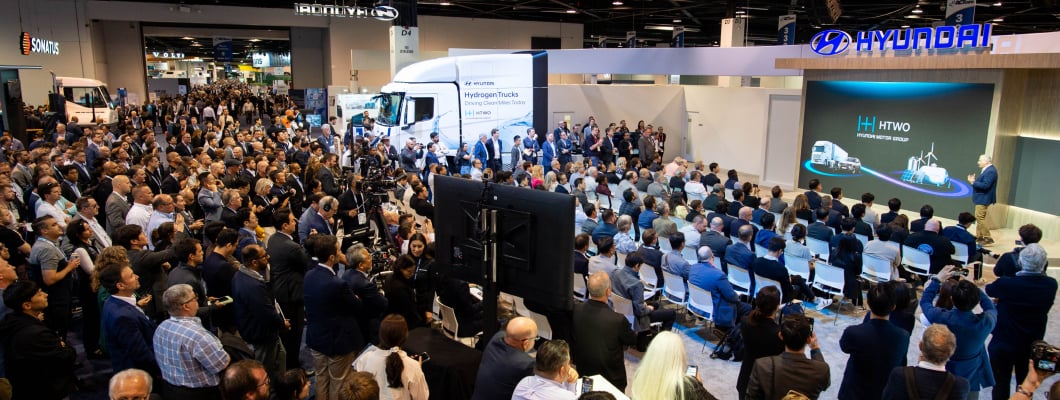After breaking attendance records once again, ACT Expo opened day three with a keynote by Amy Davis, CEO of Accelera, Cummins’ new zero-emission technology brand.
“I came to the company because it’s committed to making a difference in our communities, but also in the environment and leading the industry through emissions reductions,” began Davis, who has worked for Cummins for more than two decades.
Cummins began making serious moves into electrification in 2017 when it acquired Brammo, a company that designed and developed battery packs. The company then added a vehicle integrator, another battery company, and a hydrogen company to its portfolio by 2019. In 2022, Cummins completed the acquisition of Meritor and Siemens Commercial Vehicle Systems.
“Coupling these acquisitions with investment in research and development, we’ve spent $1.9 billion, and we now have over 2,000 innovators dedicated to advancing decarbonization with zero-emission solutions,” said Davis. “About two months ago, we took a big step forward in this pursuit by launching Accelera by Cummins.”
The new brand, a combination of accelerate and era, is poised to fast-track the shift towards zero-emission transportation, according to Davis.
“We have a history of proving out technologies specific to heavy-duty trucking and other heavy commercial applications, and we know your applications and duty cycles and all the challenges that they bring,” said Davis, adding that this knowledge, which dates back to more than a century ago, will help the new brand tailor its solutions to meet fleet needs.
Davis then went on to discuss how the technologies that work in light-duty markets will not necessarily work for commercial solutions and vehicles, specifically challenging duty cycles that are also diverse. Accelera is currently pursuing multiple paths forward, not betting on one single technology, while also developing multiple product lines of batteries tailored to meet the demands of specific applications.
“Given the variety of commercial applications, it will take multiple technologies to decarbonize. I bet I’m not the first person to talk about the debate between batteries and fuel cells, and I know I’m not the first person to say we need both. The key factors to determine which technology will be the amount of work or power needed coupled with the distances or overall hours of operation,” said Davis.
Infrastructure, according to Davis, will play a key role how fleets choose the clean technologies that will work best for them. From access to chargers or fueling stations to the length of time to refuel these different vehicles, to training drivers and technicians to work with these technologies — fleets have to ask the questions, do their homework, and partner with the right solution providers.
“There’s a lot more you need to think about than the technology,” explained Davis. “The U.S. will need 1.2 million public charging stations, but perhaps more relevant, we need 28 million private EV charging stations by 2030 to meet the federal targets.”
Davis then presented some recommendations for fleets. First, start with training, as “the complexities involved in electrification are significant.” Fleets need to define their ideal needs and begin to understand the unexpected challenges and operations for drivers, like safety.
“Secondly, invest in strategic infrastructure projects and partnerships,” continued Davis. “One thing that is abundantly clear is that the amount of green energy infrastructure in our country is insufficient for our industry decarbonize. We need renewable energy sources to make green hydrogen a power charging stations and we need access. We can’t do it alone. This makes for perfect areas to form partnerships.”
These partnerships, in Davis’ opinion, will help advance the technology faster by combining ongoing designs and trials, resulting in an effective total cost of ownership for fleets.
“I’ve been here 27 years and I’ve seen this industry deal with technology advancements and all the costs and complexity, and that’s progress,” concluded Davis. “As an industry, we know how to take on technology challenge and continue to prosper as an industry. We will do it again.”


